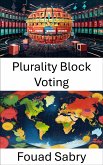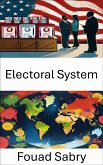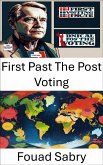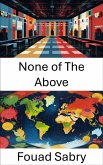Limited Voting: A Key to Understanding Electoral Dynamics
"Limited Voting" is essential for those studying electoral systems-This book explores how having fewer votes than seats influences representation, party dynamics, and fairness.
Chapters Overviews:
1-Limited Voting-Fundamentals and impact on electoral outcomes.
2-Plurality Voting-Comparison with limited voting and effects on voter influence.
3-Proportional Representation-Contrast with limited voting in fairness and representation.
4-Electoral Threshold-Role in shaping party systems within limited voting.
5-Duverger's Law-Predictions about party systems under various voting methods.
6-Single Non-Transferable Vote-Similarities and differences with limited voting.
7-Block Voting-Comparison in voter power and election outcomes.
8-First-Past-The-Post Voting-Implications for representation vs-limited voting.
9-Multiple Non-Transferable Vote-Impact on election dynamics.
10-Multi-Member Constituencies in the UK-Interaction with limited voting principles.
11-Elections in Sweden-Application of limited voting concepts.
12-Electoral System of Australia-Integration of limited voting principles.
13-List of Alberta General Elections-Role and impact of limited voting.
14-Canadian Electoral System-Effects on political outcomes.
15-Prussian Three-Class Franchise-Historical relevance to modern limited voting.
16-Elections in Canada-Impact on political representation.
17-1926 Alberta General Election-Case study of limited voting in practice.
18-Calgary Electoral District-Experiences with limited voting.
19-Edmonton Electoral District-Practical implications of limited voting.
20-Vancouver City Electoral District-Influence of limited voting.
21-Elections in the UK-Application and outcomes of limited voting.
Who is this book for?
Ideal for professionals and students of political science, this book offers deep insights into electoral systems and enhances understanding of democratic processes and fairness.
"Limited Voting" is essential for those studying electoral systems-This book explores how having fewer votes than seats influences representation, party dynamics, and fairness.
Chapters Overviews:
1-Limited Voting-Fundamentals and impact on electoral outcomes.
2-Plurality Voting-Comparison with limited voting and effects on voter influence.
3-Proportional Representation-Contrast with limited voting in fairness and representation.
4-Electoral Threshold-Role in shaping party systems within limited voting.
5-Duverger's Law-Predictions about party systems under various voting methods.
6-Single Non-Transferable Vote-Similarities and differences with limited voting.
7-Block Voting-Comparison in voter power and election outcomes.
8-First-Past-The-Post Voting-Implications for representation vs-limited voting.
9-Multiple Non-Transferable Vote-Impact on election dynamics.
10-Multi-Member Constituencies in the UK-Interaction with limited voting principles.
11-Elections in Sweden-Application of limited voting concepts.
12-Electoral System of Australia-Integration of limited voting principles.
13-List of Alberta General Elections-Role and impact of limited voting.
14-Canadian Electoral System-Effects on political outcomes.
15-Prussian Three-Class Franchise-Historical relevance to modern limited voting.
16-Elections in Canada-Impact on political representation.
17-1926 Alberta General Election-Case study of limited voting in practice.
18-Calgary Electoral District-Experiences with limited voting.
19-Edmonton Electoral District-Practical implications of limited voting.
20-Vancouver City Electoral District-Influence of limited voting.
21-Elections in the UK-Application and outcomes of limited voting.
Who is this book for?
Ideal for professionals and students of political science, this book offers deep insights into electoral systems and enhances understanding of democratic processes and fairness.
Dieser Download kann aus rechtlichen Gründen nur mit Rechnungsadresse in A, B, BG, CY, CZ, D, DK, EW, E, FIN, F, GR, H, IRL, I, LT, L, LR, M, NL, PL, P, R, S, SLO, SK ausgeliefert werden.









